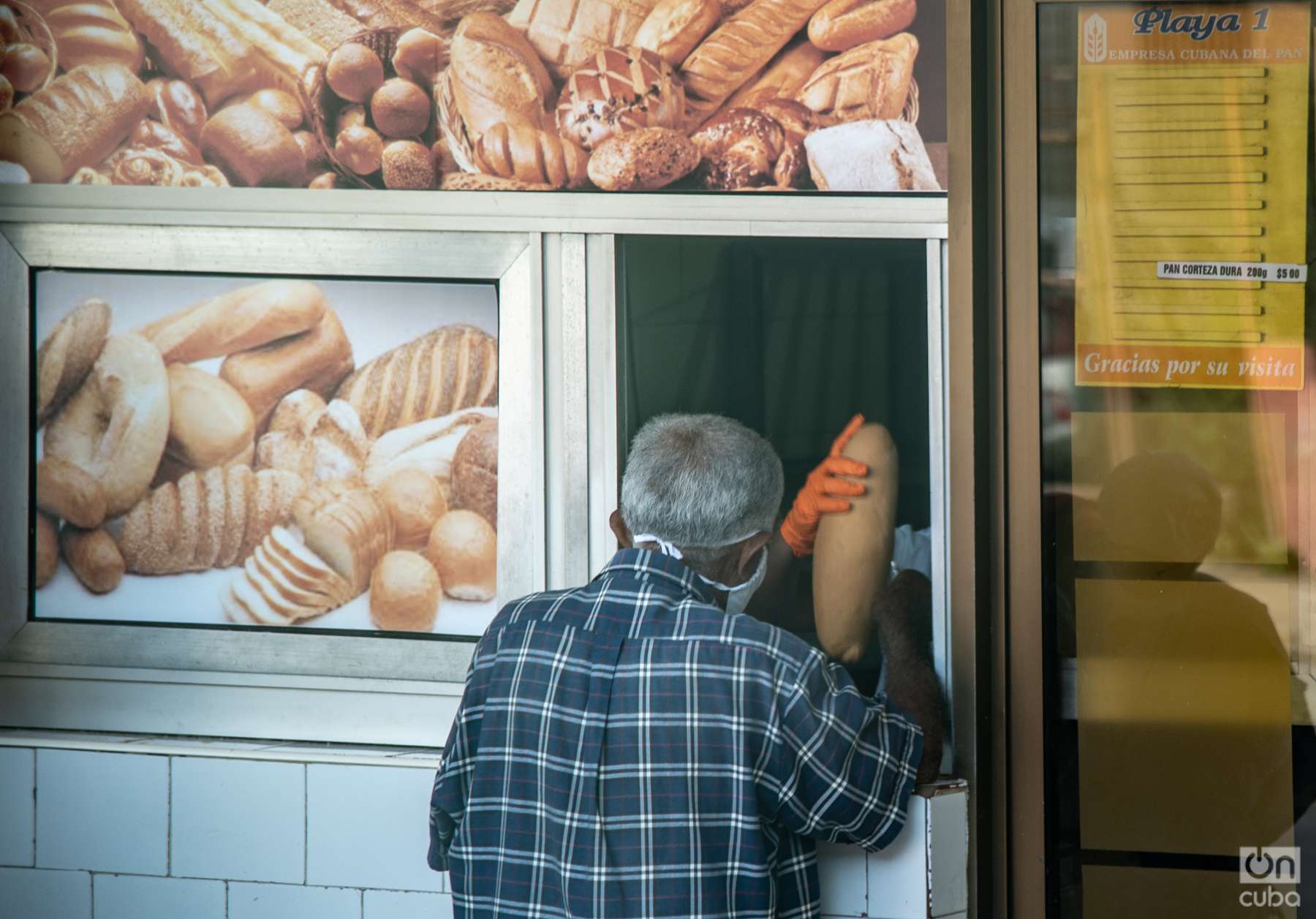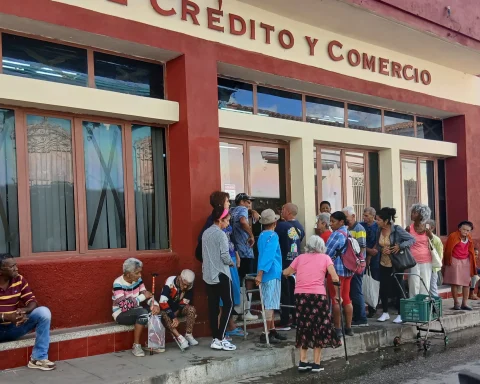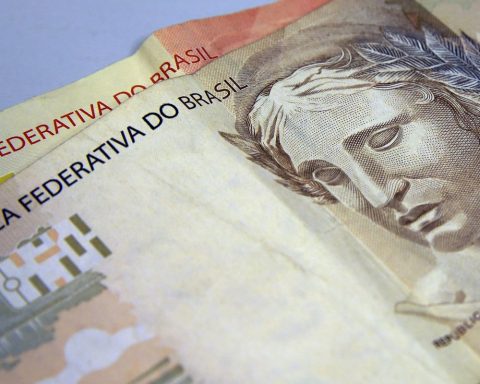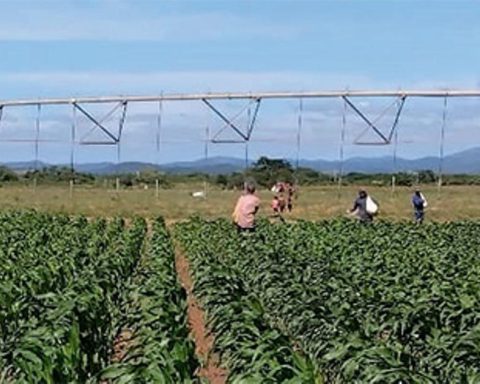To “guarantee the demand for flour that the country needs [se] they must receive three to four shipments per month [… y] they are only receiving one or two ships of wheat a month”, explained in October the technical director of the Cuban Milling Company, Yanet Lomba.
The entity manages four of the five mills that operate in Cuba —installed in Havana (2), Cienfuegos (1) and Santiago de Cuba (1)— and supplies raw material to the one managed by the mixed company Industrial Molinera de La Habana SA ( IMSA). The day that Lomba gave statements to cubadebate (October 18, 2022), only the Santiago industry was in operation, to grind a “level of wheat” that would run out in a few hours. The unloading of a ship with 20 thousand additional tons was planned; but that volume was barely enough to cover the demands of the basic food basket and the social destination until the beginning of November.
Priced at over $650 a ton, the purchase of each ship of wheat involved paying between $14 million and $16 million.
The situation worsened in the course of 2022, and will continue in the immediate months, anticipated the official: “there is currently no stable financing for the purchase of wheat.”
The lack of foreign exchange is only part of the problem. Many banks refuse to manage payments to suppliers and shipping companies for fear of sanctions from the United States, explained to Granma Maidel Linares, first vice president of the Food Industry Business Group (GEIA), which coordinates the work of the millers and the Cuban Bread Company, and the distribution of flour to the private sector and bakeries of the regulated quota.
The “border” of the minimum 220 thousand tons
The 717,345 tons of wheat and meslin (a mixture of wheat and rye intended mainly for making bread) imported by Cuba in 2019 they cost almost 200 million dollars.
Each ton of cereal was then quoted at $279. But the pandemic and the war in Ukraine plunged prices into a hitherto unstoppable inflationary spiral. In 2021, for the purchase of 562,853 tons, the island paid 216 million dollars (385 dollars per ton). In 2022, the estimated import of 415 thousand tons of wheat would have required the disbursement of no less than 270 million dollars.
Based on the “minimum” daily consumption, the country uses about 600 tons of flour per day in the production of standard bread and for social purposes (for hospitals, schools, prisons…). This consumption does not contemplate the demand in hotels or gastronomy. It is increasingly difficult to sustain, acknowledged the GEIA board interviewed by Granma in October 2022. Many provinces receive the raw material day by day, or even with delays, which affects the production cycles of bakeries and influences the quality of the food that reaches consumers, he explained.
Each rise in prices in the international market has forced adjustments by the Ministry of Economy and Planning. In order to preserve regulated deliveries, in the last two years the allocation of resources to the animal feed and meat industries — also greatly affected by the shortage of soybeans and corn — and confectionery production have been drastically reduced.
The released sales of bread have almost been suspended outside of Havana, while the Cuban Bread Company normalizes proposals that at first had been considered circumstantial, such as the use of “extenders” (roots and fruits added to the dough to partially replace the wheat flour) and the “incursion into the sale of other productions”.
In October, the deputy director of the Company, Nieves Lebeque, highlighted that many bakeries feed their salary funds by selling fruit juices and condiments instead of bread. In the interior of the island, the use of rice or corn flour for confectionery is becoming more and more common.
Private importers and sales in MLC
About 20,000 balls of standard bread can be obtained from one ton of flour, which, after sale, report a gross profit of 20,000 pesos (at the current exchange rate, between 120 and 130 dollars).
That money is enough to pay for even a fifth of the flour that was used in production. The invoice does not include expenses such as oil, yeast, energy and labor. Losses are less when it comes to released bread; but the profits obtained (in pesos) do not compensate for the investment (in foreign currency).
Supplying the Cuban bread market has become very expensive, while initiatives that could generate additional income are not exploited by the Government.
One of them is the sale of flour in Freely Convertible Currency (MLC). A significant percentage of the population accesses this market. Part of the income generated by the demand for flour in it could be used to subsidize standardized bread or even the recovery of the deteriorated milling industry. The numbers confirm it. The brands that in other times sold these stores reached the shelves with a value higher than a dollar per kilo. Even so, demand was always ahead of supply and in a few days even the most stocked establishments were out of stock.
The import and sale of flour (not its processing in Cuban mills) would represent a constant source of foreign exchange.
Studies of the Ministry of Economy and Planning, quoted by Granma last October, they estimated that the demand from the private sector alone rises to around 15 thousand tons of flour annually. The institution itself delimited that this statistic “must have increased”, according to the multiplication of forms of non-state management.
Regarding domestic consumption, there are no public records, but the yearbooks of the National Office of Statistics and Information (ONEI) provide a clue. In 2021, Cuba imported 52,029 tons of flour, more than 30,000 more than what it had purchased, on average, during the previous two years.
Due to its quality, imported flour has three fundamental destinations: tourism, the private sector or sales in foreign currency to the population. In a year in which tourism fell to historic lows, one can only conclude that the bulk of imports ended up going to the other two market segments.
Always according to ONEI, in 2021 Cuba paid $551 per ton of imported flour, so its hypothetical sale at one dollar per kilo would have reported a net profit of almost $450 per ton. Since then, although the price of food has risen, so has its price in stores on MLC and in the informal market.
In groups of Facebook dedicated to the bakery (pastry chefs, MSMEs, buying and selling) it is difficult to find proposals below $1.30 per kilogram. The most competitive are usually related to imports or wholesale purchases.
Ariel (pseudonym) represents a Uruguayan company in Cuba that, for $34,606, places a container with 1,100 bags of wheat flour in the port of Mariel, each weighing 25 kilograms. The final price per kilo is 1.26 dollars.
“It is an offer designed for MSMEs, although it may be the case that a self-employed worker buys the entire container or divides it with others. After placing the order, the cargo takes between 30 and 45 days to reach Mariel,” he explained.
Options like this have the advantage of being backed by legal documents, but due to their volume they are impractical for most businesses and private consumers. “Although one tries to guarantee their reserves, buying two or three bags is not the same as buying a whole container. Starting with money and ending with something as basic as storage”, reasoned José Luis (pseudonym), a baker from Ciego de Ávila. In the last year, flour and oil “ran out of control”, and consequently, it had to raise its prices several times. “Right now we are at the point of not being able to continue with the business, how are we going to sell a ball of bread, at 50 pesos?” He lamented.
Scarcity is a breeding ground for illegalities. In the provinces that do not have mills, a 100-pound sack of flour can be quoted at 15,000 pesos, or more; while in those where these industries are located —particularly, Havana— the product can be found starting at 10,000 pesos. there is no lack of publications proposing flour made by IMSA, despite the fact that this entity does not formally market to individuals.
With certain facilities from the State, private importation could alleviate this situation. Other markets such as technology and textiles have long benefited greatly from shipments brought from abroad by entrepreneurs.
In the case of wheat flour and other confectionery raw materials, the reduction of customs duties would be a positive step. These rates are part of the CIF/CIP rates —which include the value of the merchandise, its insurance and transportation to the port of destination— and in Cuba they come to represent up to a third of the final amount of private imports. Not all of that money is used to pay tariffs and customs clearance, but a part is, becoming an additional cost that is passed on to consumers.
The future quotes in the main cereal markets of the world they anticipate a year of stability in terms of wheat prices. For Cuba it is good news. But from there to overcoming the current crisis of shortages is a distance that can only be overcome in the short term by combining the public-private initiative.
















